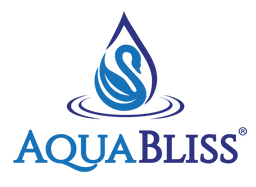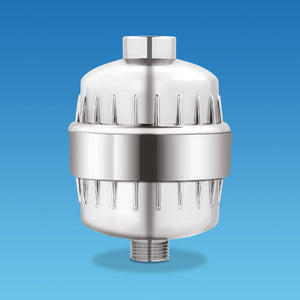To date, multiple forms of estrogen have been discovered in drinking water treatment plants and sewage treatment plants, but not always in different tap water supplies.
However, there have been select cases of estrogen, endocrine-disrupting chemicals, and other water contaminants in tap water. This has been blamed on all sorts of things, from birth control pills and other oral contraceptives to environmental pollution, steroid hormones, bad drinking water supply, and more.
However, in order to truly understand what’s in our drinking water supplies, the human health risk of various contaminants, etc., we have to clearly define what estrogen is and how it can get into tap water.
What is Estrogen?
Put simply, estrogen is a sex hormone that facilitates the regulation and maturation of both the female reproductive system and female sexual characteristics.
Estrogen also plays a pivotal role in helping pregnant women carry a baby to term via developing the uterine lining and other hormones that are pivotal to a fetus’ growth.
While it’s essential for the human body, you don’t want to consume drinking water with estrogen. Estrogen can be both a natural and synthetic hormone, depending on the source from which it derives.
You’ll generally find natural estrogen in various foods, such as vegetables, legumes, herbs, cereals, and flaxseeds. Natural estrogen ultimately comes from various cell membranes and receptors within the body.
Synthetic estrogen, on the other hand, is a bit more complicated. This form of estrogen, commonly found in various forms of birth control, impacts hormone levels within the body and stems from various pharmaceutical formulations.
One thing that both natural and synthetic estrogen have in common is neither should be in your drinking water supply. While estrogen has its place in birth control pills and other oral contraceptives, it can be problematic once it starts contaminating water.
How Does Estrogen Get into Tap Water and Drinking Water Supplies?
Over the years, many people have asked themselves, “Is there actually estrogen in tap water or drinking water?” The short answer is yes. However, we need to understand how our drinking water becomes contaminated with estrogen concentrations and what this means for anyone - not just women - who consumes regular drinking water.
Believe it or not, the answers are not cut and dry. Contrary to popular belief, birth control pills and other oral contraceptives are far from easy scapegoats. Instead, it’s been proven that natural and synthetic estrogens enter the drinking water or tap water supply.
This happens mainly via contaminated water distribution systems, wastewater treatment plants, and environmental pollution. Liquid chromatography, disinfection byproducts, animal waste, and even infected river water and each have a role to play.
At this time, there is no evidence to suggest that people who take birth control pills are direct contributors to estrogen in tap water. Even without the presence of birth control pills, estrogen in drinking water would still be a problem.
Water Contamination Pathways

Natural estrogens have been found to enter the water systems via the discharge of animal waste and domestic sewage. These contaminants are responsible not only for estrogen in drinking water but also endocrine-disrupting chemicals.
Industrial and agricultural runoff, in particular, often leads to infected surface water, which pours into lakes, rivers, and other waterways.
Runoff of this variety is no joke, as it can pose not just human health risks but also risks to aquatic organisms. These creatures also suffer when coming into contact with contaminated drinking water.
Wastewater Treatment
The process of wastewater treatment is uniquely designed to remove pollutants, bacteria, animal waste, and other chemicals from our drinking water. Without wastewater treatment plant effluents and the thorough process that follows, all of our water supplies would be unusable.
Yet, despite the effectiveness of this treatment and environmental monitoring, it doesn’t always remove natural or synthetic estrogen from drinking water. Instead, estrogen concentrations in the water supply are oftentimes chemically combined with oxygen before being passed downstream.
While this can reduce the human health risk factor associated with estrogenic chemicals, the drinking water supply is still less than ideal. The low removal efficiency also contributes to a chain of events that hurts most living beings.
Environmental Impact of Estrogen in Drinking Water
Water treatment plants, sewage treatment plants, and water contamination pathways that don’t filter out estrogen have significant impacts on human health, the aquatic environment, and everyday life.
Natural estrogens and synthetic estrogen alike can adversely impact the reproductive capabilities of both wild and domestic animals. Estrogenic activity of this variety has also been linked to the contamination of farm fertilizer, sabotage of plant development, and even changes to gene expression.
At the pollutant level, estrogen exposure is linked to higher risks of cancer in not just women but also men. While women are more likely to suffer from breast cancer after coming into contact with natural or synthetic estrogens, men have a higher probability of suffering from prostate cancer.
Evidence of Estrogen in Tap Water Supply and Drinking Water

Many people may be surprised to learn that the World Health Organization (WHO) has not implemented any strict regulations for estrogen exposure in drinking water despite the increased risk to human health and the environment.
Some people believe this is due to estrogen being central to the female reproductive system and to various birth control methods. Nevertheless, the lack of regulations is reflected via key research findings that show considerable estrogenic potency in drinking water.
The National Library of Medicine has documented synthetic and natural estrogens in drinking water despite stating post-risk assessment that extremely adverse effects are rare. Similar findings from the National Institutes of Health focus on endocrine-disrupting compounds in water supplies.
These contaminants pose a danger to the reproductive system by hurting the endocrine system and its procreative abilities. The NIH’s findings very clearly demonstrate that you don’t want estrogen or any endocrine disruptor in tap water, drinking water, or any other water supply.
How Does a Shower Filter Reduce Estrogen Exposure in Tap and Drinking Water?
If you’re interested in avoiding endocrine disrupting compounds, environmental contaminants, and other forms of estrogen exposure, you’ll want to use an AquaBliss shower filter. Is there really estrogen in tap water and drinking water? Yes, but that doesn’t mean you have to use an unclean water supply.
AquaBliss goes above and beyond to reduce the reported concentrations of contaminants like estrogen. We can assure you will enjoy immaculate showers, thanks to our state-of-the-art water filtration system.
Our shower filters directly add beneficial minerals into your water supply while filtering out chlorine, calcium, and other chemicals that are best avoided. This process naturally filters out estrogen while also balancing your PH levels.
Finding the right shower filter that minimizes estrogen and other contaminants has never been easier. Among our best-selling products are the HD Multi-Stage Shower Filter, Multi-Stage Shower Filter - Chrome, Revitalizing Shower Filter - Chrome, and HD Revitalizing Shower Filter - Chrome.
Note: AquaBliss HD Multi-Stage Shower Filter (SF500) lab results show it can reduce Estrone (estrogen) and Testosterone by 99.993%. Removable sediment pads have also proven to be quite helpful with our proprietary filtration processes. To learn more about the AquaBliss shower head filter collection, feel free to contact us here.
Health Implications of Estrogen in Tap Water Supplies and Drinking Water

Given the presence of estrogen in birth control, oral contraceptives, and surface waters, many people think estrogen water consumption isn’t a big deal. Unfortunately, the precise opposite is true.
There are many health implications, and there’s no acceptable daily intake of estrogen via drinking water. Estrogen is ultimately dangerous because of its adverse effects on human health, sex hormone levels, and more.
Human Health Risk of Infected Drinking Water
The NIH has very clearly documented the negative effects that estrogen exposure can have on sleep, emotional regulation, body weight, and more. In the grand scheme of things, this risk assessment should not be taken lightly.
Bathing or drinking water that has too much estrogen can cause human beings to suffer from mood swings, heavy menstruation, sleep problems, breast cysts, headaches, gallbladder infections, and worse.
People who already have pre-existing medical conditions can see their health take a potentially fatal turn upon exposure to steroid hormones, estrogen, or any kind of endocrine disruptor. This poses harm to not just women, but also men.
Hormonal Disruption
Estrogen in water impacts not just body weight, pregnant women, and the river water supply, but it can disrupt the human endocrine system. Because estrogenic chemicals can act as endocrine disruptors, they can adversely impact fertility.
This is partially why estrogen is commonly found in birth control pills and oral contraceptives that are meant to prevent pregnancy. Endocrine functions aren’t just limited to reproductive health, however.
They’re likewise responsible for metabolism and the body’s overall development. It goes without saying that you don’t want ongoing exposure to an estrogen-infected drinking water supply.
Long-term Effects
If your tap water, or drinking water is regularly infected with estrogen, this can lead to serious long-term problems. Aside from the aforementioned risks of cancer and endocrine complications, pharmaceutical residues and other contaminants can lead to a series of other human health risks.
Among the risks of prolonged estrogen exposure via tap or drinking water are cardiovascular diseases, infertility, thyroid diseases, and worse.
Estrogen within birth control pills or other oral contraceptives is fine. Its adverse effects on drinking water, water treatment plants, and even the aquatic environment should never be underestimated.
Protect Your Bathing and Drinking Water Supplies From Estrogen
By all accounts, the human health risk assessment on natural estrogens and synthetic estrogens couldn’t be more clear. While this sex hormone is vital for pregnant women, the creation of birth control pills and other oral contraceptives, etc., it shouldn’t be in our water supplies due to the adverse effects.
Estrogen, unfortunately, gets inside tap water samples due to mismanaged sewage treatment plants, the transfer of already contaminated surface waters, and ineffective wastewater treatments that don’t cleanse river water and other similar sources.
While the human health risk assessment is grim, the premier AquaBliss shower filter collection can protect your tap and drinking water from estrogen. No matter what’s happening with sewage treatment plants, changing environmental compartments, or your local drinking water treatment plant, our shower head filters have you covered.
Note: AquaBliss HD Multi-Stage Shower Filter (SF500) lab results show it can reduce Estrone (estrogen) and Testosterone by 99.993%. Removable sediment pads have also proven to be quite helpful with our proprietary filtration processes.
Thanks to our strong filtration system and infusion of healthy minerals, we guarantee that your shower will be one with pristine water that truly cleanses your skin. With reduction of chemicals that poison your tap and drinking water supply, enjoy showers that leave you feeling refreshed, renewed, and ready to take on the world!
For years, many people have found themselves asking, “Is there really estrogen in tap water or drinking water?” The answer is yes, but with knowledge about natural estrogens, synthetic estrogens, and the AquaBliss shower filter collection, you can take action to help protect yourself and your family accordingly.







